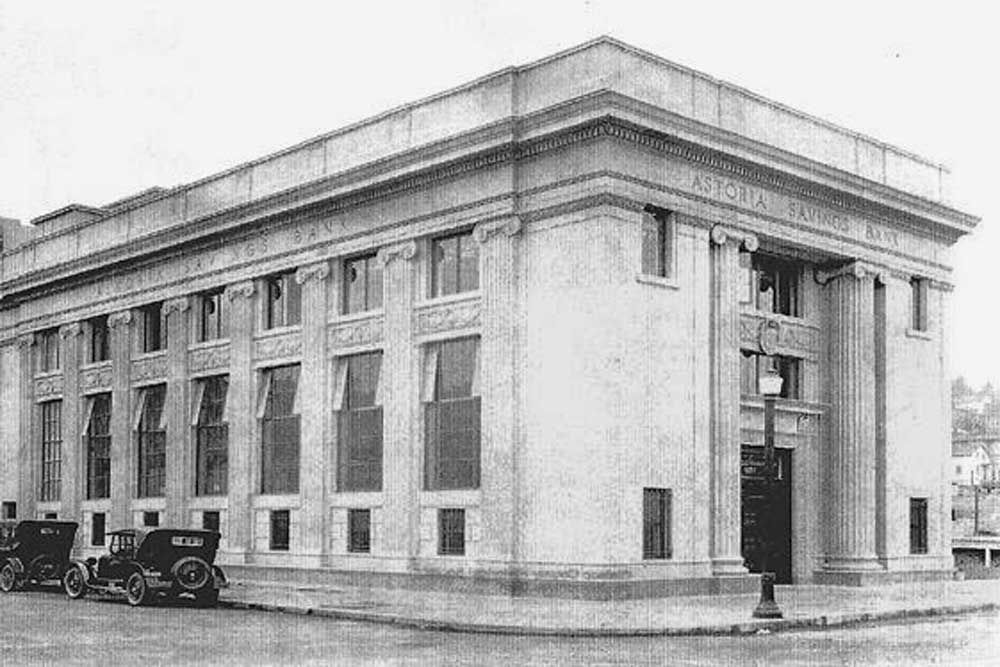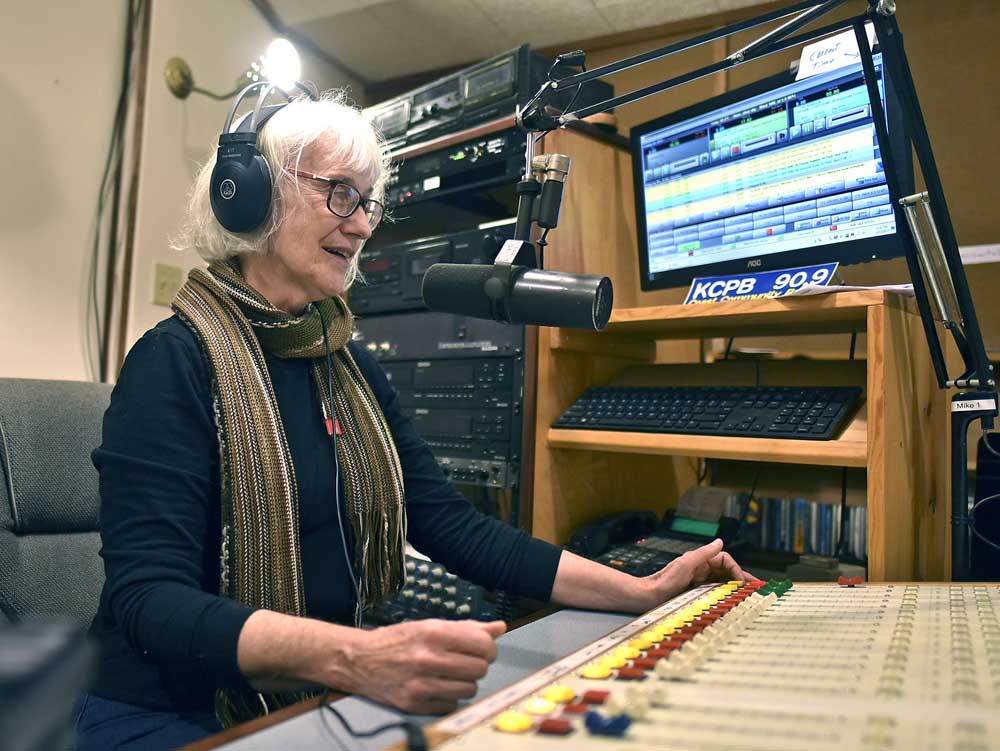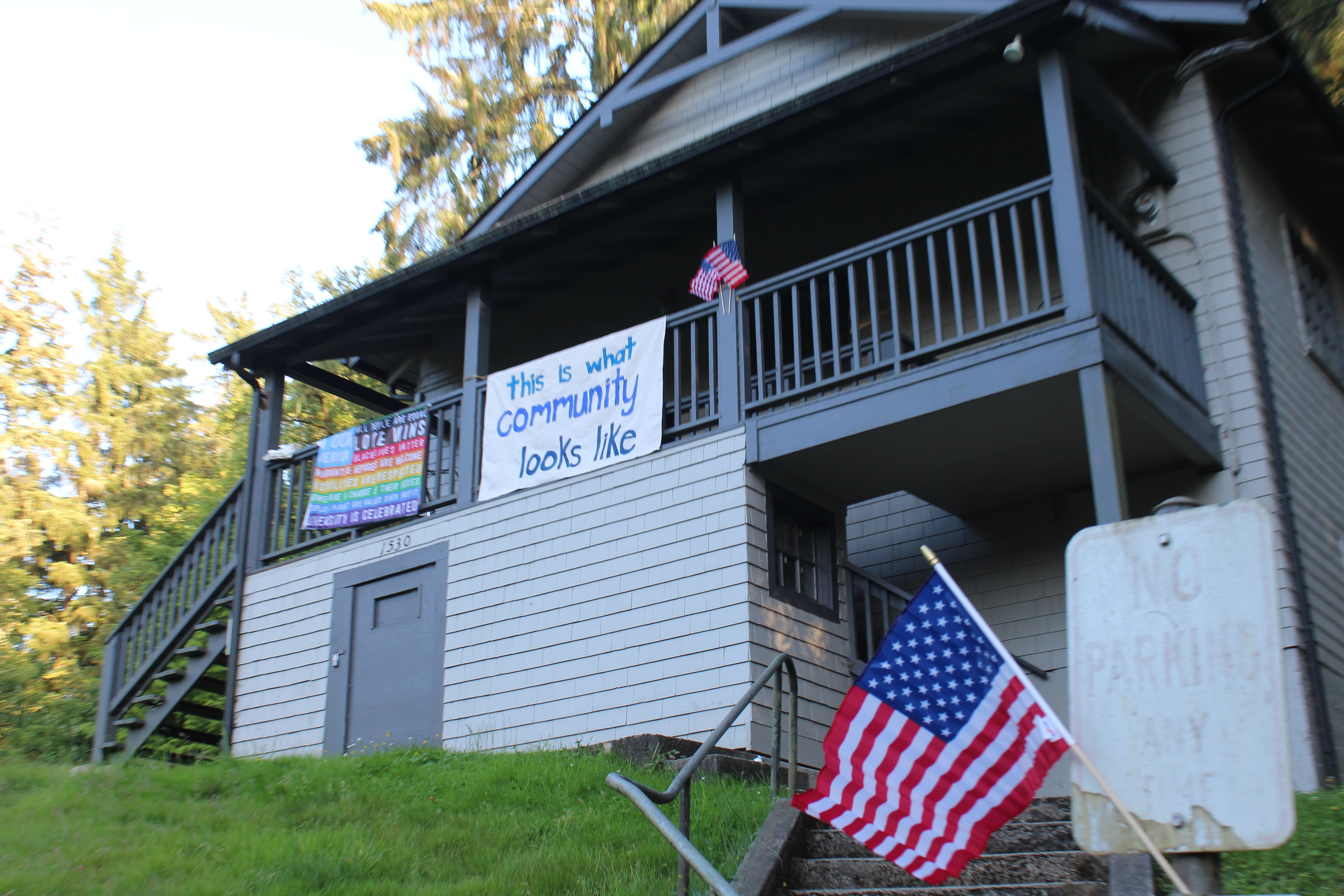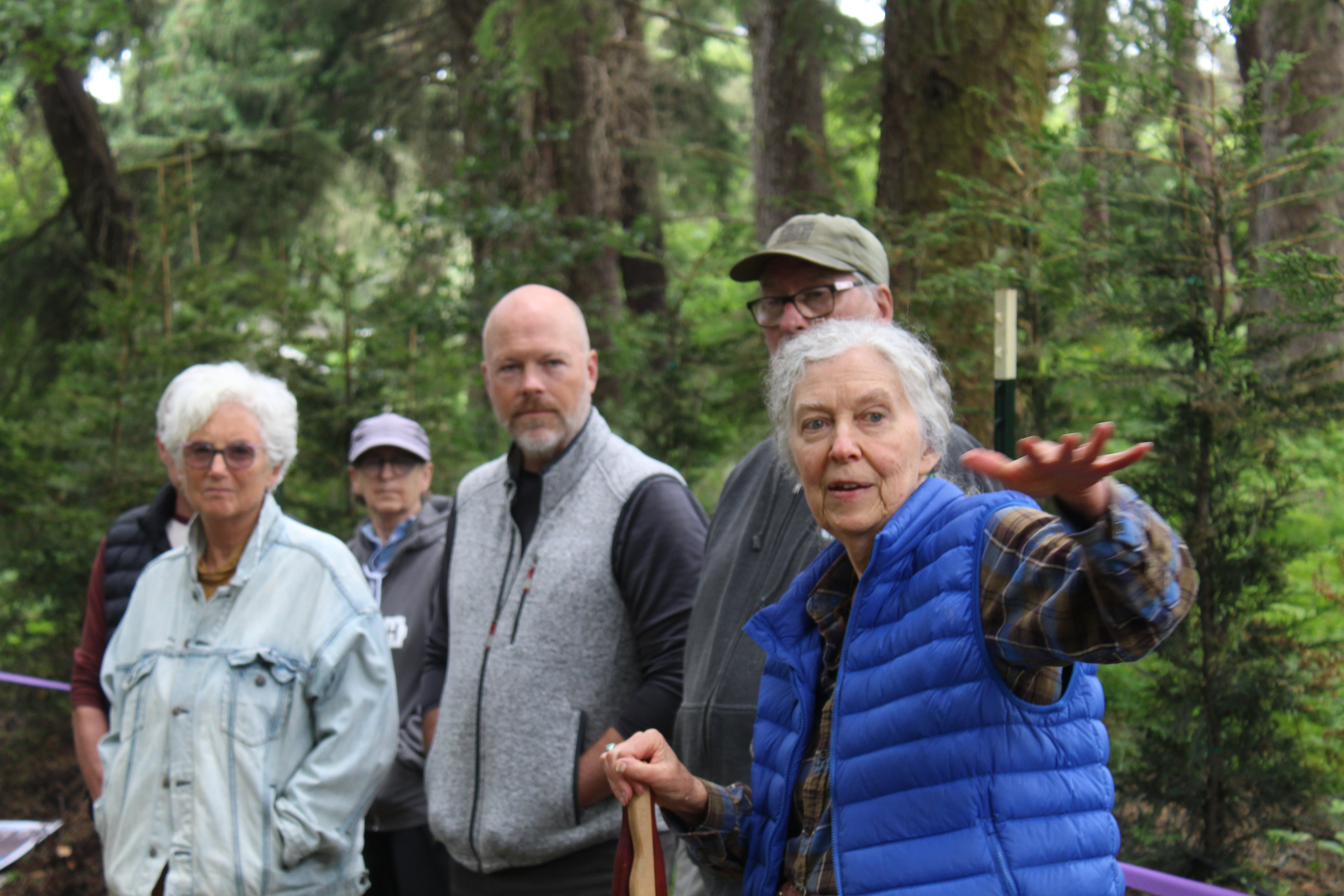Out of the ashes: A tale of two banks
Published 1:00 pm Friday, July 21, 2023

- Astoria Savings Bank, as seen at the intersection of 11th and Duane streets following the fire, now houses Astoria City Hall.
After the Great Astoria Fire of 1922, the city’s business district was without permanent necessities like supply stores, food establishments and financial institutions.
Trending
Rebuilding, which mostly took place between 1923 and 1925, required haste and efficiency, resulting in a somewhat uniform streetscape. Two buildings on Duane Street, however, stand out as exceptions to this uniformity: Astoria City Hall and the building that later housed the Museum of Whimsy.
These two bank buildings act as gateways to a past when bank architecture was designed to be prodigious, with an emphasis on sophistication and intimidation rather than the convenience and friendliness implemented into modern banks.
Before the fire, downtown Astoria had four major bank buildings, all of which burned to the ground. For days after the fire, embers continued to glow and fragments of the banks’ brick walls stood tattered around their exposed vaults — too hot to touch, let alone open.
Trending
Sailors and soldiers were assigned as guards to protect the contents of the vaults from looters. Once bank officials retrieved cash and other valuables, they moved everything to the Clatsop County Courthouse where, according to late local historian Russell Dark, “sailors from the destroyer Yarborough mounted a machine gun to protect the money.”
Astoria’s first official bank had been established in 1886 as regional fishing and timber industries turned the city into a boom town. Three more banks opened by the turn of the century.
In 1907, Astoria cannery man Gustavus Holmes organized the Scandinavian-American Savings Bank. In just five years, the success of his financial institution warranted construction of a new building on the southeast corner of 12th and Duane streets, across from the Weinhard-Astoria Hotel.
Architect Emil Schact designed the hearty two-story structure, composed of white glazed brick. Announcements for the new bank building touted fireproof and burglar-proof vaults. Then, in 1920, the directors of the Scandinavian-American Savings Bank decided to consolidate with the Astoria National Bank as a way to boost their overall capital stock. As hands shook and ink dried, the consolidated Astoria National Bank put in an order for a new 40-ton vault.
Just two years later, in the wake of the fire, amid the rubble and caved-in streets, the hollow walls of the burned-out Astoria National Bank building endured, cradling its steadfast fireproof vaults.
Astoria architect John Wicks, who was also vice president of the bank, resolved to incorporate the surviving walls and vaults into a reconstruction rather than starting a new building from scratch. Work began in summer 1923.
Wicks’ design implemented Classic Revival features such as four 20-foot ionic terra cotta columns with a palmette-lotus frieze. Although Greek and Roman Revival architecture was commonly used for financial institutions across the country, this temple-like building was like no other ever built in Astoria.
Dominating the streetscape, the new Astoria National Bank building was an optimistic gesture to a city picking up its pieces, ensuring stability and the protection of Astoria’s financial future.
Bookending the other side of the block on Duane at 11th Street, the Astoria Savings Bank opted for a similar style for its new building.
Architect John V. Bennes, known for designing Astoria’s Liberty Theatre and Portland’s Hollywood Theater, drew the plans for the classically styled building with two Ionic columns flanking a pair of bronze doors. Eight fluted pilasters lining the eastern elevation also gave this building an imposing presence.
The concrete foundation of the 1906 Astoria Savings Bank building — a brick, four-story structure — was reused and new walls were built around the bank’s surviving vault, which was encased in 27 inches and 80 tons of fireproof reinforced concrete. The contract for construction was signed in July 1923. The bank re-opened the following summer.
Unfortunately, neither monument was Herculean enough to withstand the 1929 stock market crash and the subsequent Great Depression. All but one bank in Astoria failed. Both the Astoria National Bank and Astoria Savings Bank went into receivership and never recovered.
But the Astoria National Bank building didn’t sit empty for long. In 1930, the vacancy was filled by the newly chartered Bank of Astoria, which was then purchased by U.S. Bank a few years later.
U.S. Bank served Astorians with their finances at the building for a handful of decades, but bank styles were changing. Customers no longer wanted to go to a building that felt like a frigid mausoleum and banking staff wanted more natural light in their workplace. Banks across America evolved with new attitudes toward buildings and banking, incorporating energy-efficient practices, color and style.
In 1973, U.S. Bank embraced national trends and constructed a new, modern building on Duane and Ninth streets. The fashionable brown brick building was designed by John Wicks’ daughter, Ebba Wicks Brown, who incorporated various lines and shapes including a circular window to showcase one of the bank’s original vaults, brought over from the old building.
During the Great Depression, the Astoria Savings Bank building sat empty for seven years before it was acquired by Clatsop County. In 1938, the Public Works Administration helped fund the building’s renovation for use as a new city hall.
While the layout and details of the building were altered, it continues to retain a commanding appearance to the block. Visitors to Astoria City Hall can see the original vaults behind the front desk. The original light fixture hangs above in the vestibule and the original interior pilasters can be seen up close on the second floor.
During uncertain times, Astoria’s banks projected security and stability by incorporating intentional architectural details. These two bank buildings are examples of how architecture can act as a window, allowing us to peer into how people lived during different periods of history and how priorities have shifted over the decades.
They inspire curiosity, standing as reminders of how people interacted with the world 100 years ago, and offer the opportunity to reflect on where we are now.









